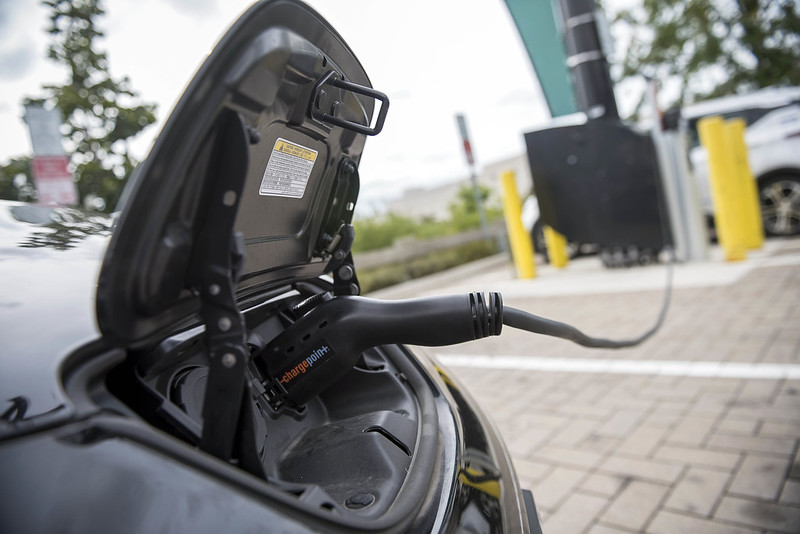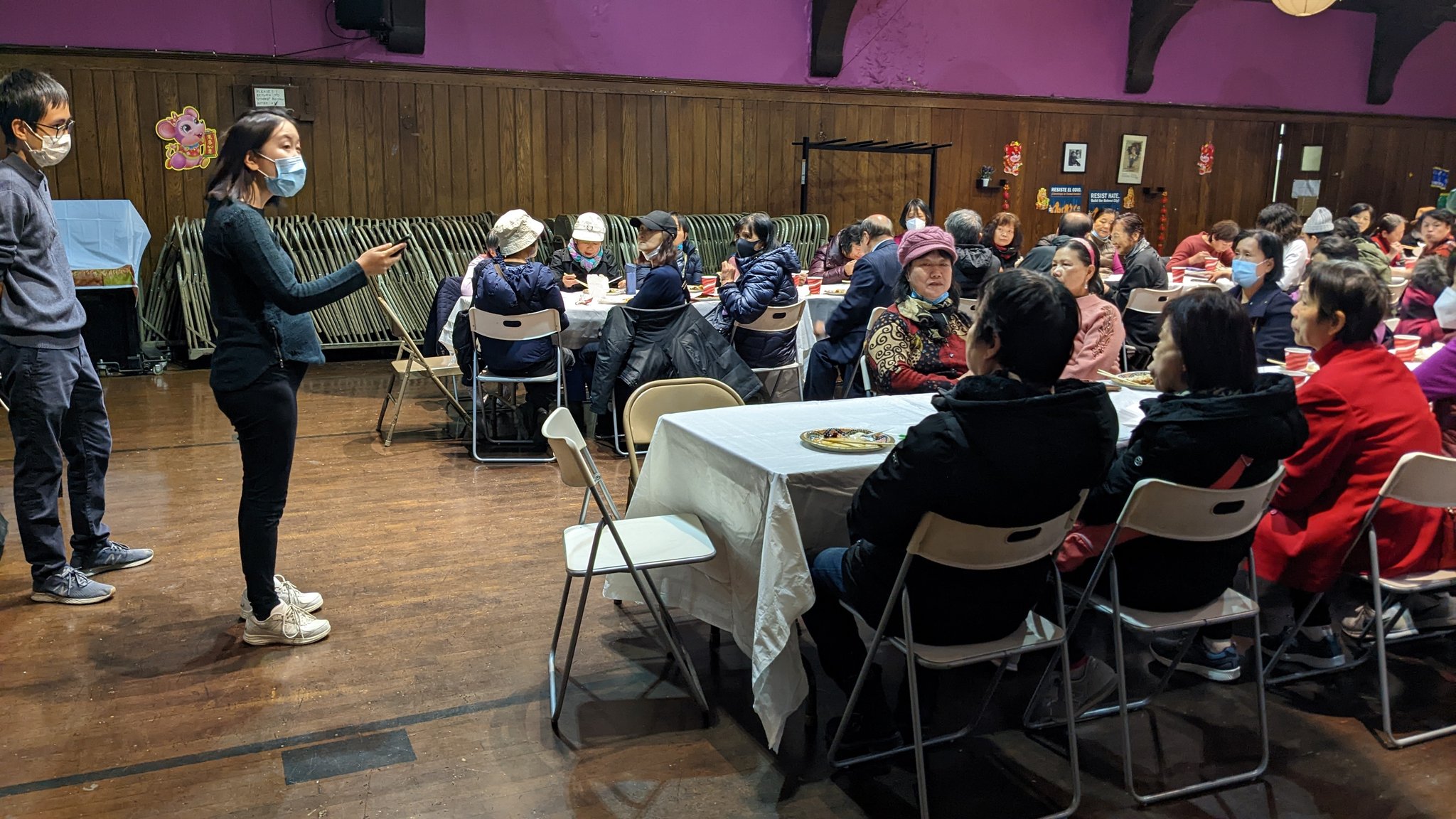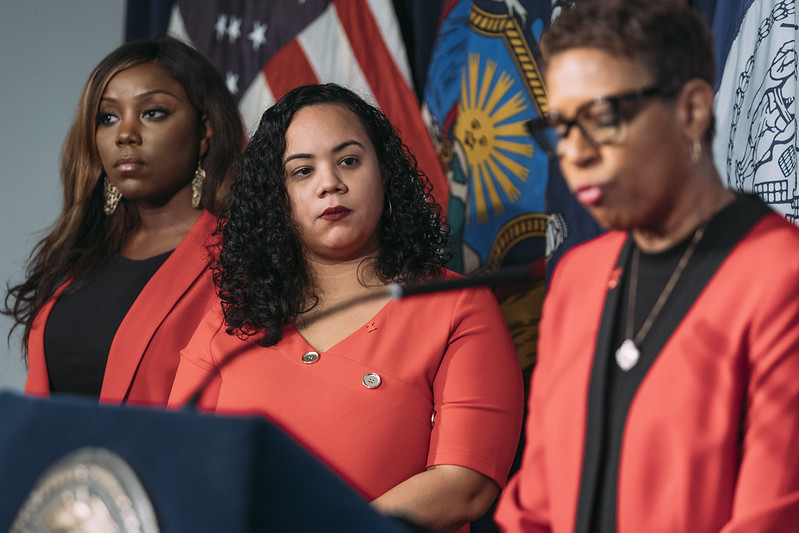Time to Create a Fast Lane for Zero-Emission Vehicles in New York; Here's How

Electric vehicle charging (photo: Ed Reed/Mayor's Office)
In late January, Mayor Adams announced a bold and exciting goal to require New York City’s for-hire vehicle fleet to reach zero emissions by 2030. This was a welcome step forward, considering the goal is shared by major for-hire platforms, including Uber, as well as the City Department of Transportation, who recognize the climate crisis is an existential threat to our city and our planet.
While these shared goals are a North Star, getting there is another matter. It will require coordination across the public and private sectors to make the changes necessary to reach zero-emissions.
Uber has already committed $800 million in resources globally to help support drivers’ transition to electric, covering an array of electric vehicle (EV) and charging discounts and incentives around the world to make the switch. Last year, Uber hired HR&A Advisors to help assess what strategies and policies need to be implemented in order to help spur such a transition in New York City, and whether the City’s current plans for charging infrastructure could support a full adoption of EVs in New York.
The resulting report, just published, found that critical gaps in New York City’s infrastructure will pose significant challenges to achieving this transition in the next seven years.
While there are currently critical gaps in the infrastructure needed to achieve these goals, by taking direct and clear action now, we believe the City, utilities, EV charging companies, and mission-driven landowners can work together to accelerate the path to a 100% zero-emissions future.
Supercharging NYC’s EV Infrastructure
Despite rapid growth in EV sales, New York City is currently lagging far behind other U.S. cities in adoption among for-hire drivers. EVs represent fewer than 1% of for-hire vehicles on city streets, compared to 9% in San Francisco and 11% in San Diego.
To transition to EVs, many ride-hailing drivers need access to overnight and off-shift charging at or near their homes. Given their high daily mileage, for-hire drivers also need convenient, low-cost, and fast public chargers in areas where they make most of their trips.
New York City has only 2,000 public chargers, of which only 200 are the direct-current fast chargers that drivers can depend on throughout their day. The trend in the ratio of new public chargers to new registered EVs also poses challenges.
The highest concentrations of public chargers are in high-cost business and residential districts in Manhattan, Downtown Brooklyn, and Long Island City, and are often behind a paywall in for-profit parking garages. Those chargers are convenient for commuters or high-income residents, but not for the for-hire drivers who drive more miles than residents do and disproportionately live in neighborhoods throughout Queens, Southern Brooklyn, and parts of the Bronx, places where there is currently minimal access to charging — let alone high-speed charging.
Strategies to Electrify New York
If the City and its public and private stakeholders, including platforms like Uber, work together, we can meet the moment. This is an ideal time to be engaging in this work, and leveraging unprecedented federal legislation, including the Bipartisan Infrastructure Law and Inflation Reduction Act, to support EV infrastructure and help drivers purchase new and used EVs
The work has already begun with the City Department of Transportation’s “Electrifying New York” plan, which includes a goal of 40,000 low-cost chargers and 6,000 fast chargers by 2030, through a combination of public and private investment, and the recent electrification recommendations of the Taxi and Limousine Commission in its “Charged Up” report.
Our report recommends 10 strategies that will support enhanced access and affordability to EV charging infrastructure, build the processes and systems to support for-hire driver needs and help achieve the 2030 zero-emissions goal:
- Identify high-need neighborhoods that overlap with where for-hire drivers live to prioritize where to place low cost and fast chargers.
- Work with utilities to identify high-volume pick-up and drop-off areas in which the grid currently has capacity to support new fast chargers.
- Develop a comprehensive EV infrastructure deployment plan to strengthen coordination with utilities, optimizing the City’s ability to achieve its emission reduction and environmental equity goals, and electrify the for-hire vehicle fleet.
- Aggressively pursue new federal funding opportunities to direct investment to target neighborhoods.
- Streamline the permit process for EV charging as part of the City’s ongoing efforts to improve land-use processes.
- Leverage real estate assets owned/managed by public or faith-based entities to provide land for accessible, affordable chargers in targeted neighborhoods and near high-volume trip areas.
- Explore land use incentives for private developers to integrate public chargers with no gate or parking fees into new developments.
- Continue targeted outreach and engagement specific to the for-hire vehicle industry.
- Support EV charging operators in communicating electricity prices and charger availability with drivers, as well as in developing driver-centric incentives to reduce charging during peak load times.
- Further develop a new pricing structure for the cost of power for charging operators that makes charging more affordable.
Working Towards 2030 Zero-Emissions
There is unprecedented momentum and alignment among the various players in the mobility and for-hire vehicle industry in New York City. For government, regulators, public utilities, Uber, Lyft, and the taxi industry, the zero-emissions target for 2030 is a North Star. Meeting this goal will require coordination among all parties and achieving success means creating an accessible, affordable, and ubiquitous ecosystem of charging solutions. The time to act is now.
***
Hayley Prim is a Senior Policy Manager at Uber based in New York City. Eric Rothman is CEO of HR&A and a former official at Transport for London, and Ignacio Montojo is a Principal in HR&A’s Infrastructure Practice based in New York. On Twitter @HayleyPrim, @uber, @hraadvisors.
***
Have an op-ed idea or submission for Gotham Gazette? Email This email address is being protected from spambots. You need JavaScript enabled to view it.
The Danger of Upholding AAPI Sweatshops

Organizing efforts in Queens (photo: @johnchoe4nyc)
City Hall is a fascinating place where you can easily transform to be an “anti-racist,” if you know how to seize the opportunity. In December 2022, a member of a non-profit organization made racist remarks casting Asians as unwanted foreigners during a City Hall hearing. Sandra Ung, the Chinese-American City Council Member from Flushing, quickly jumped to condemn this person’s hurtful remark, portrayed herself as a staunch fighter against bigotry, and, one month after the incident, wrote an op-ed in Gotham Gazette reminding people of “the danger of downplaying AAPI bigotry.”
Throughout, Council Member Ung and many others who say they are champions of AAPI communities have been downplaying something else: Chinese home attendants in Ung’s district and beyond have been calling out her and other elected officials for upholding racist 24-hour workdays.
Home attendants in New York City — majority immigrant, Asian and other women of color — have been forced to work the inhumane 24-hour workdays, days on end, taking care of clients in serious health conditions who need round-the-clock care, and with only 13 hours of pay. If the workers refuse these shifts, the home-care agencies will punish them by not giving them work or assigning them few hours. The 24-hour workday has caused physical and mental damages to the workers such as insomnia, anxiety, back pain, deformed hands and injured legs, and ruined their family relations. It also puts patients in danger as it deprives the caregivers of needed rest.
Outside New York City, where home care work is performed mostly by white and other citizen workers, 12-hour or even 8-hour shifts are the norm. Home attendants in New York City have long-called for an end to the racist violence committed against them by the insurance companies and home care agencies in order to make profit.
Most recently, the New York State Department of Labor has been investigating the serious wage theft of numerous home-care agencies that stole from each worker hundreds of thousands of dollars on average, some as much as half a million. And now, with the “No More 24” Act (Intro. 175 at the City Council), New York City has a chance to end this racist and shameful practice of 24-hour workdays for good.
But Council Member Ung will not have it. While happily tweeting support for the leading wage-stealing home-care agency, Chinese-American Planning Council (ironically for “breaking stigmas of poverty”), she refuses to meet with her home attendant constituents to discuss the legislation. In early September of last year, home attendants testified for hours at City Council chambers detailing the torture they endured from 24-hour workdays. Yet Council Member Ung was nowhere to be found, nor did she write any op-eds reminding people of the racist violence faced by those Asian women workers. Instead, she held a press conference, disrespecting workers further by saying reasonable shifts can only happen with more state money for the agencies: we need more funding for these blood-sucking home care agencies, otherwise violence must continue!
It chills our bones to see Council Member Ung ask people to respect AAPIs for their “indispensable role in this great city.” What’s the “indispensable role”? That some so-called community representatives commit harrowing abuse upon Asian women in their community? That our elected representatives provide cover for such sweatshop conditions and look down on Asian women?
In her op-ed, Council Member Ung even cites historic examples of labor strife and competition, but casts workers of other races as the cause of Asian hate. The truth is, immigrant workers have been used by the government to suppress wages and lower working conditions for all workers. The 24-hour workday is the worst example as it creates a bottomless floor, forcing workers of other races to accept extra-long hours of work in order to compete. It’s in the interest of all workers to unite to end it. But Council Member Ung refuses to even co-sponsor the City Council legislation to end these abuses.
The status quo only strengthens the racist stereotype of Asians as cheap and happy slaves, willing to endure any unfair treatment and not daring to speak out. It furthers the resentment of other working people who bear the brunt of the worsening conditions created by those in power. It will only lead to more harassment and attacks against Asians, verbal and physical, in the street and in City Hall. This is the danger of upholding sweatshop conditions for our community.
Council Member Ung might think she successfully shields herself from responsibility by condemning “AAPI bigotry.” Yet, upholding the 24-hour workday for home care workers is upholding anti-Asian violence in the City Council. The home attendants have taken to the street with multiple protests and a petition against her, and are unifying the community to demand she step down — a defender of AAPI sweatshops cannot continue to represent the community.
***
Zishun Ning is an organizer of Flushing Workers Center.
***
Have an op-ed idea or submission for Gotham Gazette? Email This email address is being protected from spambots. You need JavaScript enabled to view it.
The New York City Council Demands Pay Equity for City Government Employees

City Council Members Louis, left, & De La Rosa, center - the authors (photo: Emil Cohen/NYC Council)
Our first women-majority New York City Council continues to make strides towards addressing critical inequities and disparities in the largest municipal workforce in the United States. The Council took an important step in addressing pay inequities in the municipal workforce with the recent passage of three bills. This legislative package aims to address pay disparities, occupational segregation, and the diversification and retention of city workers. Together, they will help to address many challenges impacting women and people of color in New York City.
These are real issues in New York City’s municipal workforce, just as they are across sectors and localities. In 2019, the City Council passed Local Law 18 (LL18) and began collecting and analyzing pay data across race and gender lines. Analysis from that data exposed troubling trends.
The City’s female employees make just 73 cents to the dollar made by their male colleagues. Black male employees of city government make 79 cents for every dollar made by their white counterparts. And, appallingly, Black women make just 69 cents on the dollar when compared with white male employees.
Furthermore, the analysis showed that occupational segregation is the driving force of these pay inequities. In other words, certain races, ethnicities, and genders are concentrated in specific positions within city government, and those roles are compensated differently than jobs filled by different demographics of employees.
In New York City, our government workers have carried us through the storm of COVID-19. We told them they were essential while we counted on them to drive our buses, clean our streets, distribute benefits, and keep our city running. We are currently facing severe government worker vacancies, with key agencies operating with skeleton staff, leading to challenges in New Yorkers receiving food stamps, cash assistance benefits, and other services. This is unacceptable — both for city workers, as well as for vulnerable New Yorkers who depend on these benefits to survive, and all of us who call this city home.
An oversight hearing last September addressed these vacancies in city agencies and accessibility to municipal jobs, and led to the passage of Local Law 02 of 2023. This law established the civil service ambassador program, aiming to bring awareness and additional educational support for the examination process required for 80% of municipal jobs and to reduce the approximately 8% citywide vacancy rate.
Based on the September 2022 Pay Equity Report, pay gaps decrease among employees who share the same civil service title, reaffirming that amplification of the civil service exam provides a clear pathway to close the pay equity gap within the municipal workforce. The ambassador program goes further to promote the civil service exam in non-traditional outreach locations such as high schools, juvenile justice facilities, foster care programs, shelters, and social work programs.
Government jobs can provide an important source of stability, growth, and opportunity for New Yorkers, especially for traditionally underserved communities. But these jobs must be distributed equitably. Workers of color must be afforded the same pay, benefits, and job opportunities as their white, male colleagues. And a fully staffed workforce is essential to providing the services and support New Yorkers depend on. These newly-passed bills represent a pay equity package that aims to address these issues from different, but related vantage points.
The Pay Equity Package seeks to provide the additional data collection, reporting, and analysis necessary to build on the foundation set by LL18 and LL02. Collectively, they look at the whole funnel of government employment, from the civil service exam process to recruiting and retention to terminations and resignations. They also remove some of the restrictions LL18 put in place that hindered analysis, and they dig deeper into the departments that are most segregated by race and gender. Together, they provide the City Council with the tools it needs to act on the disparities exposed by LL18.
Pay equity and a diverse workforce are the cornerstones of a just society. Without them, employees face unequal opportunity that harms them, their families, and our communities. The four years since LL18 was passed have shown us the importance of collecting the data to illuminate key trends. It was the first step towards addressing pay inequity and providing equal opportunities for city workers. But it didn’t go far enough.
These new policies take action on what we learned from that initial data. They send a strong message that we are prioritizing pay equity and a diverse workforce as our path to economic recovery and resilience. They bring New York City one step closer to its goal of being a place where people can live, work, and thrive equally. Our new majority will continue to lead the way in ensuring New York City is an equitable workplace for all.
***
City Council Members Farah Louis (District 45) and Carmen De La Rosa (District 10) represent parts of Brooklyn and Manhattan, respectively. On Twitter @CMFarahLouis & @CnDelarosa.
***
Have an op-ed idea or submission for Gotham Gazette? Email This email address is being protected from spambots. You need JavaScript enabled to view it.




